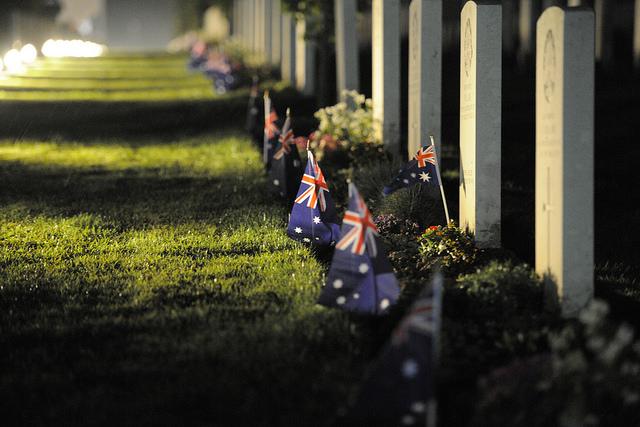
Tomorrow is Anzac Day, the 102nd anniversary of the Gallipoli landings. The occasion presents us with an opportunity to consider how our history informs our understanding of who we are and what we’ve learned from our past military experiences.
The ADF has now been operationally committed in one significant form or another for over 18 years. The experience has impacted the organisation in so many ways that it’s difficult to fathom the breadth of technical, cultural and organisational change across that time.
Last year the Australian War Memorial began producing a new multi-volume official history series documenting the ADF involvement in East Timor (1999–2012), Afghanistan (2001–14) and Iraq (2003–11). Under the leadership of Dr Craig Stockings, the project has six years to produce six volumes that will traverse three significant operational theatres through 15 years between 1999 and 2014.
At a glance, the scale, scope and timeline of the venture is daunting. Charles Bean’s official history of Australian involvement in the First World War comprised 12 volumes and took 22 years to complete. Gavin Long’s 22 volume epic covering the Second World War took 25 years and Peter Edwards’ nine volume series on Australia’s involvement in Southeast Asian conflicts (1948–1975) started in 1982 and its final volume wasn’t published until 2012.
The challenges for Dr Stockings and his team of eminent historians go well beyond the practicalities of managing resources, time and space. The decision to commission official histories for all three operational theatres was the focus of considerable political and public debate. The contemporary nature of ADF operations in the Middle East, diplomatic sensitivities involving regional and alliance partners and the reputational risk to key decision makers from the government down, all delayed the decision to produce these official histories.
Notwithstanding the complexities and sensitivities associated with a project of this type, there’s now more than ever a need to embark on this project. Not only are all three episodes important matters of Australia’s historical record, they represent an opportunity to critically reflect on the business of military commitments in an age of growing strategic uncertainty for the nation and our military.
Unlike some of our close allies, Australia doesn’t have a strong tradition of detailed and informed public discourse about its military commitments or an appreciation of how contemporary ADF operations are prosecuted. Perhaps unduly influenced by the social schism created by the Vietnam War or a predisposed cultural avoidance of public introspection about our foreign and defence policies, our ability to learn from our experience in East Timor, Afghanistan and Iraq has suffered as a result.
There’s something to be said for giving political, policy and operational decision-makers the space to operate when matters of national security are at stake, but in any venture involving the national interest and the lives of our service personnel, there comes a time for considered and dispassionate reflection.
Australia has a small number of respected and well-informed public commentators on national security and military matters and there’s a small but growing number of veterans prepared to put their experiences to print. But the public narrative in Australia is missing the detail that’s allowed Australians to learn about our past military commitments overseas. This official history project is unique in the freedom of access it has to official documents as well as a vast veteran community now accessible through social media.
Historical study is often complex. What gets discounted is often as contentious as what gets included but, done well, the official history project will go a long to addressing the gap in public awareness about the ADF’s recent commitments. Public awareness also includes those involved in deployments as well as the key decision-makers who influenced them. Bringing together a detailed account of the 15 years—a period spanning five prime ministers (one who served twice), nine ministers for defence and five CDFs—is as much about understanding how Australia’s national security framework evolved through that period as it is about knowing what actually occurred.
For the current and future generations of military strategic decision-makers, there’s a growing imperative to develop a deeper understanding of the journey that our recent military commitments have taken us on. Just as the experience of Gallipoli shaped Australian military thinking about subsequent military missions through to 1999, it’s likely that a better understanding of our experiences in East Timor, Iraq and Afghanistan will shape our approach to our next major military commitment, wherever that may be.